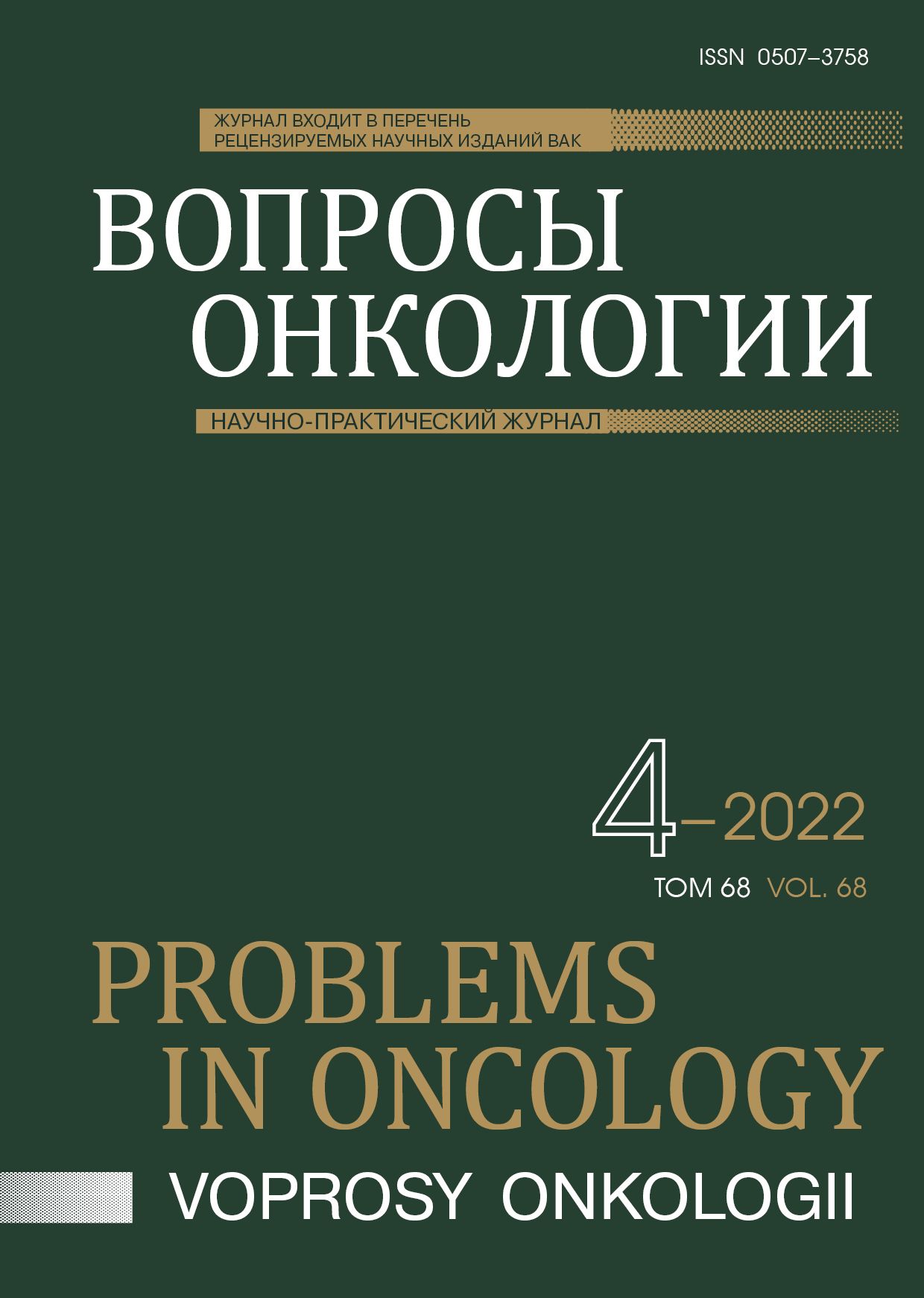Аннотация
На сегодняшний день радиотерапия играет решающую роль в лечении злокачественных опухолей головного мозга. При этом, в целом, недавние достижения в клинической онкологии, касающиеся современных методов радиотерапевтического лечения злокачественных новообразований, в отличии от уже ставшей традиционной 3D-конформной радиотерапией (3D-CRT), включают ее использование с модулированной интенсивностью (IMRT), дуговой терапии с объемной модуляцией (VMAT) и стереотаксической радиохирургии (SRS). Все эти методы позволяют доставлять более высокие дозы облучения к целевому объему, в то же время, снижая риск повышенной токсичности для нормальных тканей, по сравнению с ставшей уже традиционной 3D-конформной радиотерапией (3D-CRT). Более того, в настоящее время протонная терапия может представлять собой альтернативу фотонному облучению из-за более благоприятного распределения дозы по объему мишени. В представляемом обзоре, предлагается краткое сообщение о последних технологических достижениях в радиотерапии злокачественных опухолей головного мозга и их клиническое влияние на специальное лечение данной категории нейроонкологических больных.
Библиографические ссылки
Cho B. Intensity-modulated radiation therapy: a review with a physics perspective //Radiation oncology journal. 2018;36(1):1. DOI:10.3857/roj.2018.00122
Rong Y., Welsh J.S. Dosimetric and clinical review of helical tomotherapy //Expert review of anticancer therapy. 2011;11(2):309-320. DOI: 10.1586/era.10.175
Teoh M. et al. Volumetric modulated arc therapy: a review of current literature and clinical use in practice //The British journal of radiology. 2011;84(1007):967-996. DOI:10.1259/bjr/22373346
Georg D., Knöös T., McClean B. Current status and future perspective of flattening filter free photon beams //Medical physics. 2011;38(3):1280-1293. DOI:10.1118/1.3554643
Kazda T., Jancalek R., Pospisil P. et al. Why and How to Spare the Hippocampus during Brain Radiotherapy: The Developing Role of Hippocampal Avoidance in Cranial Radiotherapy. Radiotherapy & Oncology, 2014;9, 139(1):1-10. http://dx.doi.org/10.1186/1748-717X-9-139
Wagner, D., Christiansen, H., Wolff, H., Vorwerk, H. (2009) Radiotherapy of Malignant Gliomas: Comparison of Volumetric Single Arc Technique (RapidArc), Dynamic Intensity-Modulated Technique and 3D Conformal Technique. Radiother Oncol, 93, 593-596. DOI:10.1016/j.radonc.2009.10.002
Yi-Dong Chen, Jin Feng, Tong Fang et al. Effect of intensity-modulated radiotherapy versus three-dimensional conformal radiotherapy on clinical outcomes in patients with glioblastoma multiforme //Chinese Medical Journal. 2013;126(12):2320-2324. DOI:10.3760/cma.j.issn.0366-6999.20130218
Chargari, C., Goodman, K. A., Diallo, I. et al. Risk of second cancers in the era of modern radiation therapy: does the risk/benefit analysis overcome theoretical models? Cancer and Metastasis Reviews, 2016;35(2):277-288. DOI:10.1088/0031-9155/59/12/2883
Patil V.M., Kapoor R., Chakraborty S. et al. Dosimetric risk estimates of radiation-induced malignancies after intensity modulated radiotherapy. Journal of Cancer Research and Therapeutics, 2010;6(4):442. doi: 10.4103/0973-1482.77082.
Kondziolka D., Shin S. M., Brunswick A., Kim I., Silverman J.S. The biology of radiosurgery and its clinical applications for brain tumors. Neuro-oncology, 2015;17(1):29-44. DOI: 10.1093/neuonc/nou284
Schiller F., Fleckenstein J., Simeonova A., Wentz F. and Ent F. Intensity-modulated radiosurgery of brain metastases with flattening of rays without filters. Radiation Therapy and Oncology, 2013;109(3):448-451. DOI:10.1016/j.radonc.2013.10.017
Aoyama X , Latitude X , Tago M. et al. Stereotactic radiosurgery plus radiotherapy of the whole brain compared to stereotactic radiosurgery only for the treatment of brain metastases: a randomized controlled trial. JAMA. 295:2483-2491. DOI:10.1001/JAMA.295.21.2483.
Yamamoto, Masaaki, Serizawa, Toru Shuto et al. Stereotactic radiosurgery for patients with multiple brain metastases (JLGK0901): a multi-institutional prospective observational study. Lancet Oncol. 2014; 15:387-395. DOI:10.1016/S1470-2045(14)70061-0 .
Ruggero Ruggieri, Stefania Naccarato, Rosario Mazzola et al. 2Linac-based VMAT radiosurgery for multiple brain lesions: Comparison between a conventional multi-isocenter approach and a new dedicated mono-isocenter technique. Radiat Oncol. 2018;13:38. DOI:10.1186/s13014-018-0985-2.
Jaffray D.A. Image-guided radiotherapy: from current concept to future perspectives //Nature reviews Clinical oncology. 2012;9(12):688-699. doi: 10.1038/nrclinonc.2012.194.
Nam P Nguyen 1, Mai L Nguyen, Jacqueline Vock. Potential applications of imaging and image-guided radiotherapy for brain metastases and glioblastoma to improve patient quality of life. Frontiers in Oncology. 2013;3:284. DOI:10.3389/fonc.2013.00284 .
Yuh, G.E., Loredo, L.N., Yonemoto, L.T. et al. (2004). Reducing toxicity from craniospinal irradiation: using proton beams to treat medulloblastoma in young children. The Cancer Journal. 10(6):386-390. DOI:10.3109/0284186X.2014.887225
Yoon, M., Shin, D.H., Kim J. et al. Craniospinal irradiation techniques: a dosimetric comparison of proton beams with standard and advanced photon radiotherapy. International Journal of Radiation Oncology Biology Physics, 2011;81(3):637-646. https://doi.org/10.1016/j.ijrobp.2010.06.039 DOI:10.4236/ijmpcero.2013.21005
Barney, C.L., Brown, A.P., Grosshans, D.R. et al. Technique, outcomes, and acute toxicities in adults treated with proton beam craniospinal irradiation. Neuro-oncology, 2014;16(2):303-309 DOI:10.1093/neuonc/not155

Это произведение доступно по лицензии Creative Commons «Attribution-NonCommercial-NoDerivatives» («Атрибуция — Некоммерческое использование — Без производных произведений») 4.0 Всемирная.
© АННМО «Вопросы онкологии», Copyright (c) 2022
